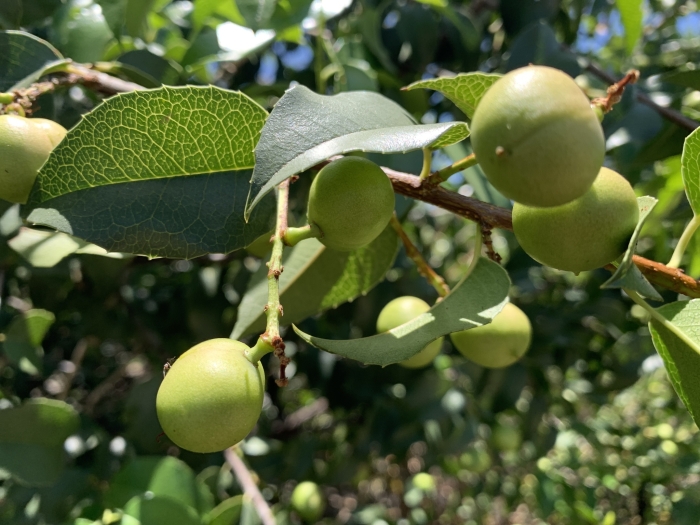Catalina Island Cherry
(Prunus lyonii)
Catalina Island Cherry (Prunus lyonii)
/
/

Eric Alan Isaacson
CC BY 4.0
Image By:
Eric Alan Isaacson
Recorded By:
Copyright:
CC BY 4.0
Copyright Notice:
Photo by: Eric Alan Isaacson | License Type: CC BY 4.0 | License URL: http://creativecommons.org/licenses/by/4.0/ | Rights Holder: Eric Alan Isaacson | Publisher: iNaturalist | Date Created: 2020-06-13T19:47:27Z |

















Estimated Native Range
Summary
Prunus lyonii, commonly known as Catalina Island Cherry, is an evergreen tree native to the chaparral, oak woodlands, and mixed evergreen forests of the California Channel Islands as well as Baja California. It typically grows to a height of 25-35 feet (7.6-10.7 meters) and a width of 20-30 feet (6-9 meters). The Catalina Island Cherry has a dense, rounded canopy with glossy, dark green leaves. It produces showy clusters of fragrant white flowers in the spring, followed by small, red to purple cherries that are attractive to birds and other wildlife.
This species is valued for its adaptability to various soil types and drought tolerance, making it suitable for water-wise gardens and native plant landscapes in Mediterranean climates. It is often used as a screen or shade tree in residential gardens and can be incorporated into habitat restoration projects. While it prefers well-drained soils, it can tolerate a range of drainage conditions and is best grown in full sun to part shade. It is relatively low maintenance but can be susceptible to pests such as aphids and borers. Prunus lyonii is not known for aggressive root systems or significant disease problems, making it a reliable choice for urban settings.CC BY-SA 4.0
This species is valued for its adaptability to various soil types and drought tolerance, making it suitable for water-wise gardens and native plant landscapes in Mediterranean climates. It is often used as a screen or shade tree in residential gardens and can be incorporated into habitat restoration projects. While it prefers well-drained soils, it can tolerate a range of drainage conditions and is best grown in full sun to part shade. It is relatively low maintenance but can be susceptible to pests such as aphids and borers. Prunus lyonii is not known for aggressive root systems or significant disease problems, making it a reliable choice for urban settings.CC BY-SA 4.0
Plant Description
- Plant Type: Tree
- Height: 25-35 feet
- Width: 20-30 feet
- Growth Rate: Moderate
- Flower Color: White
- Flowering Season: Spring
- Leaf Retention: Evergreen
Growth Requirements
- Sun: Full Sun, Part Shade
- Water: Low, Medium
- Drainage: Slow, Medium, Fast
Common Uses
Bee Garden, Bird Garden, Butterfly Garden, Fire Resistant, Fragrant, Hedges, Low Maintenance, Rabbit Resistant, Salt Tolerant, Showy Flowers
Natural Habitat
native to the chaparral, oak woodlands, and mixed evergreen forests of the California Channel Islands as well as Baja California
Other Names
Common Names: Hollyleaf Cherry
Scientific Names: , Prunus lyonii, Prunus ilicifolia subsp. lyonii, Laurocerasus lyonii, Cerasus lyonii,
GBIF Accepted Name: Prunus lyonii (Eastw.) Sarg.